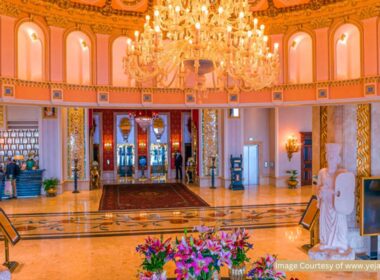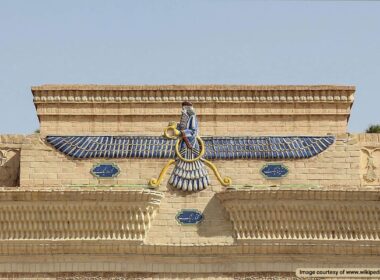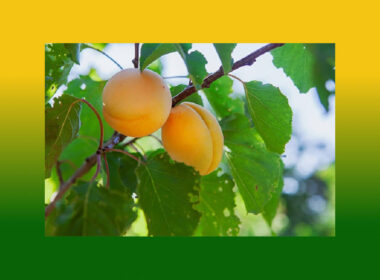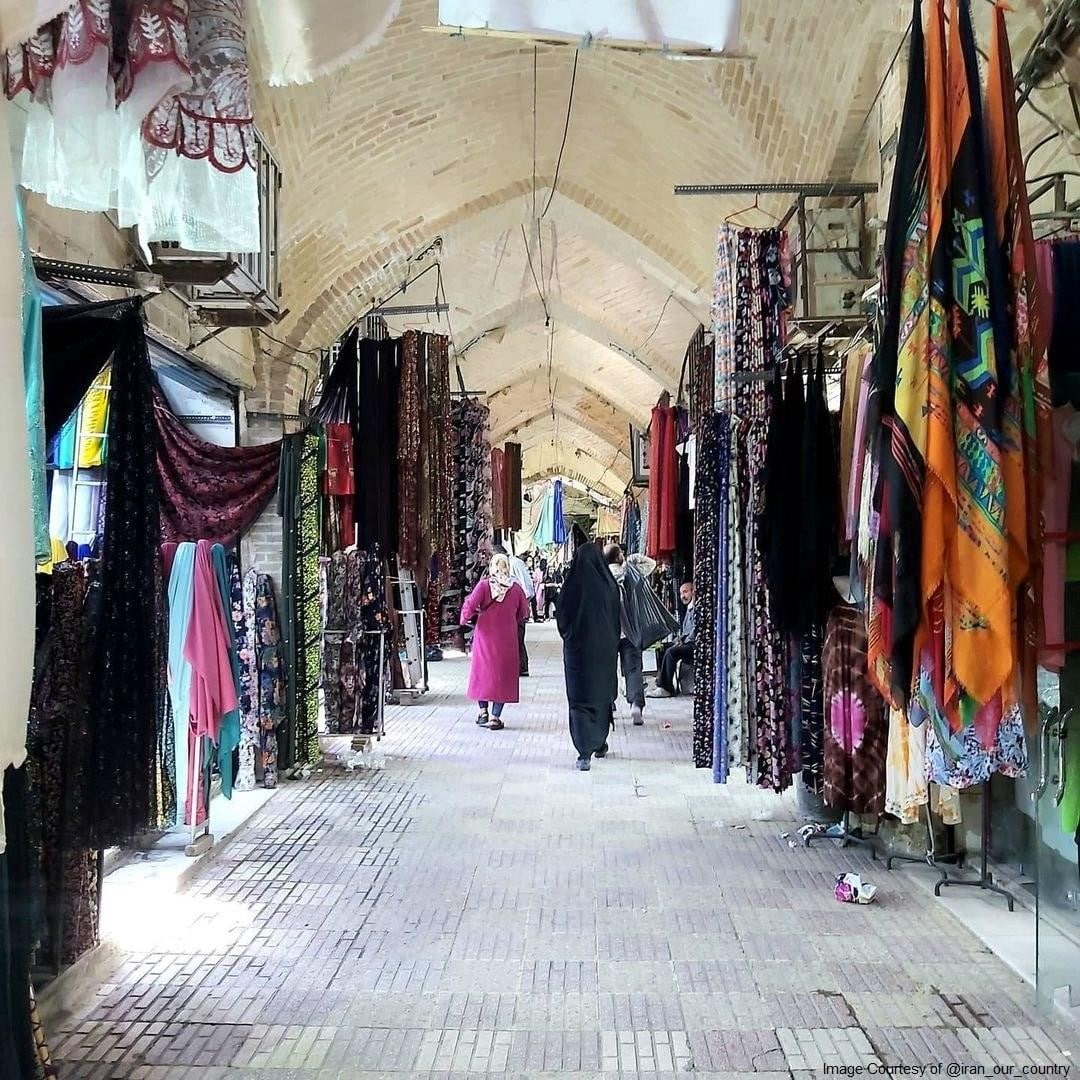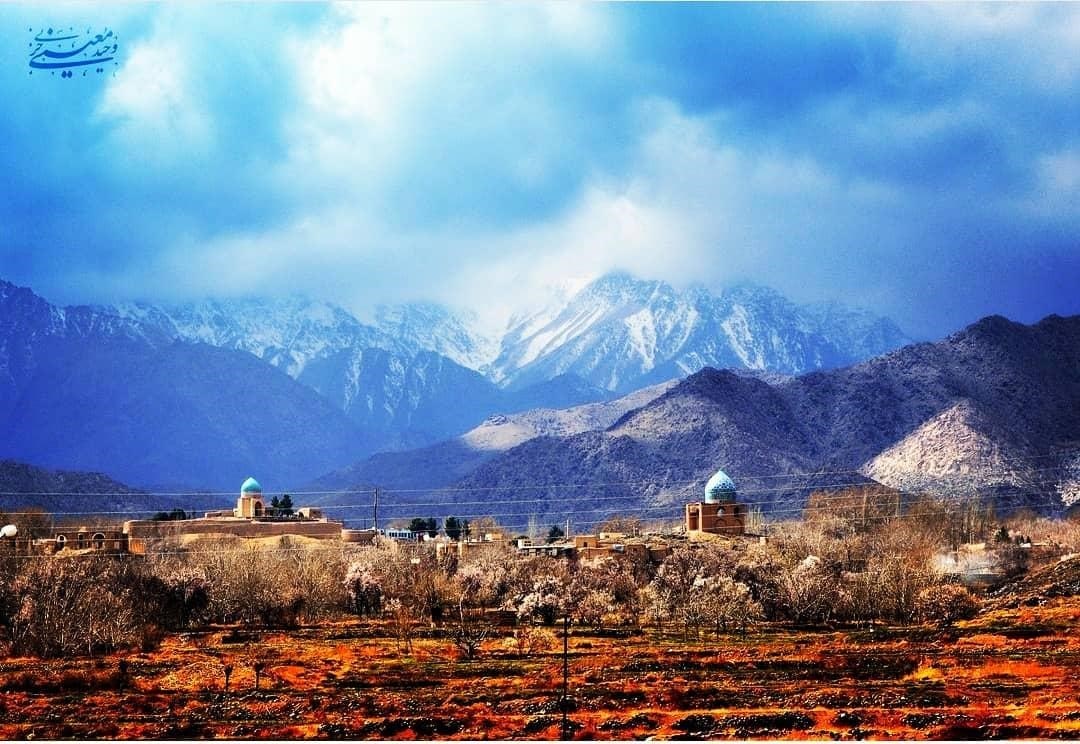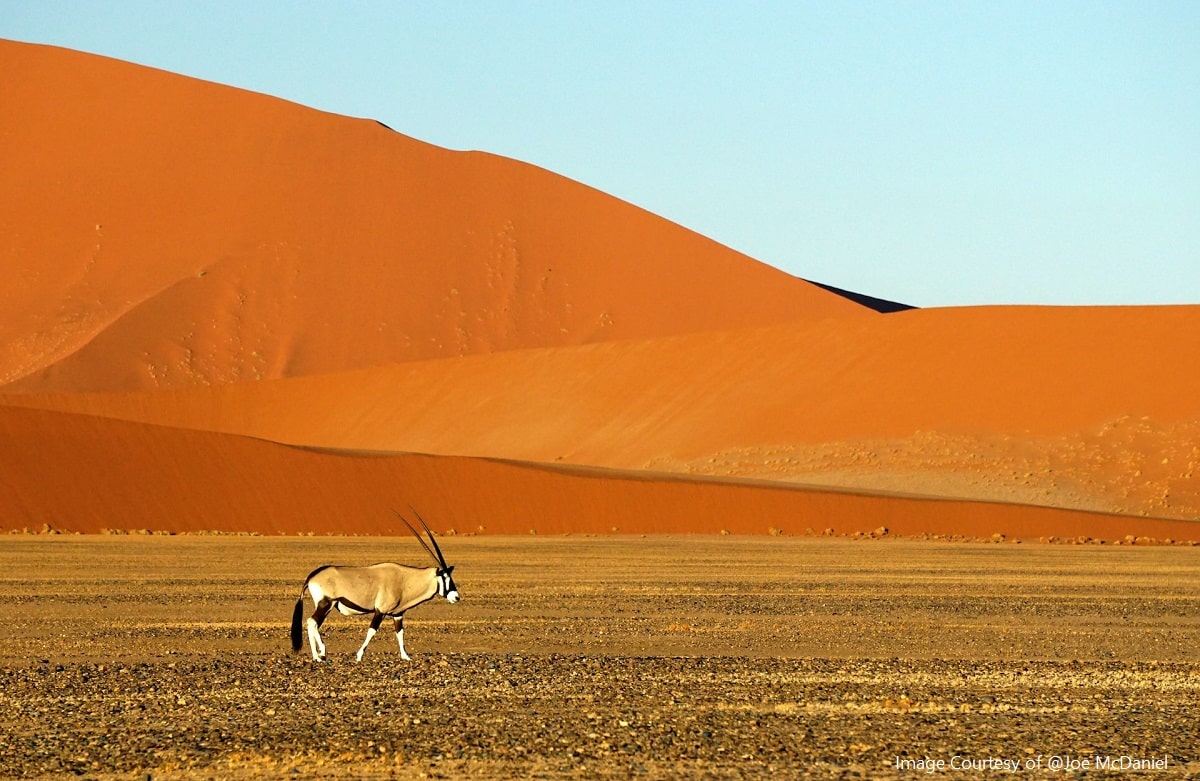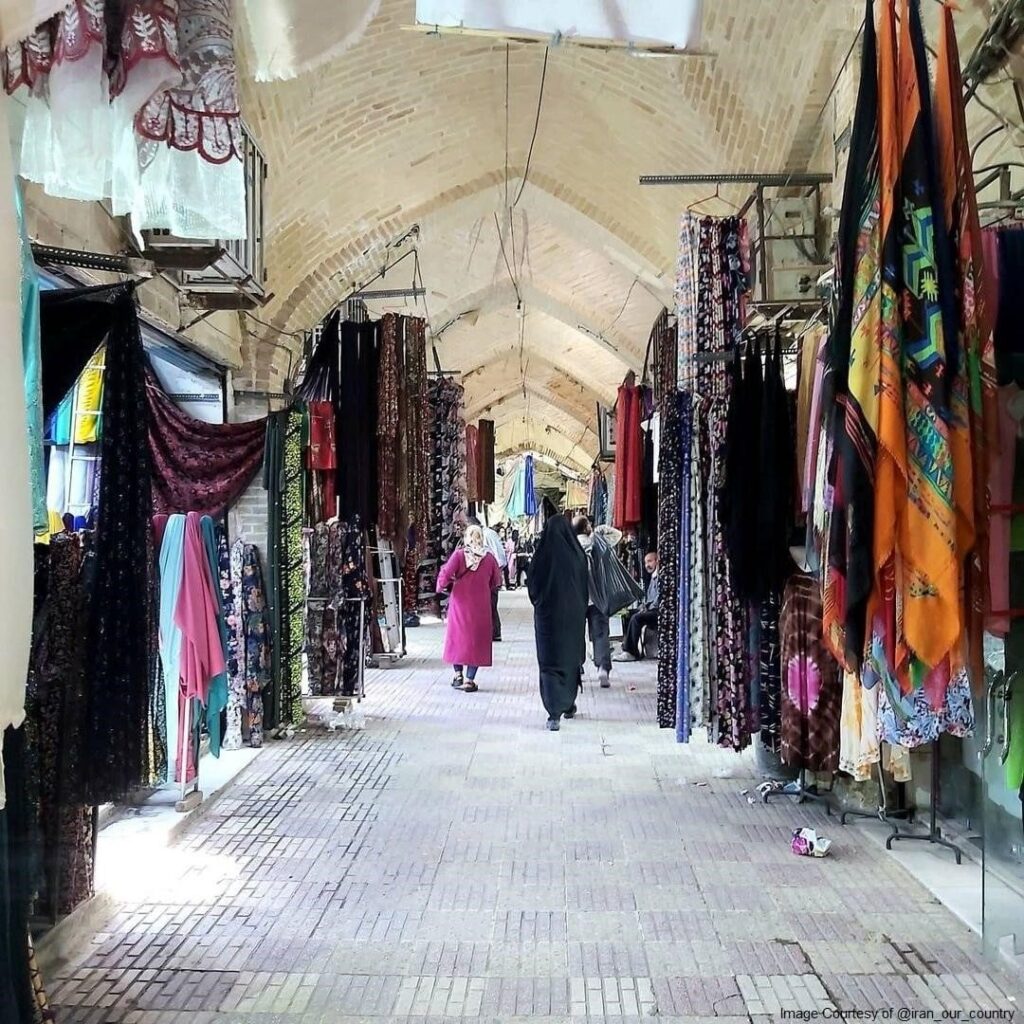
Kermanshah is one of the largest cities in Iran, located on the Midwest border. This beautiful city is one of the Kurdish-majority Iranian cities. Kermanshah is a historically and culturally significant Iranian city with many tourist attractions from the pre-Islamic era and after the Arab invasion. The traditional Bazaar is one of the most-visited Kermanshah tourist attractions and historical monuments, which was established after the arrival of Islam in Iran.
In the early years after its construction, the traditional bazaar of Kermanshah was considered one of the largest roofed markets in the Middle East. The magnificence and elegance of the bazaar led to its addition to the Iran National Heritage list in 1997.
History of the Traditional Bazaar of Kermanshah
The first Traditional Bazaar in Kermanshah was established back in the Afsharid period. At that time, the city of Kermanshah was relocated from the banks of the Qarasu River to the hillsides in the current Feyz Abad neighborhood. As a result, the first sections of the Traditional Bazaar of Kermanshah were built in this neighborhood.
During the Zand period, the two villages of Feyz Abad and Barzeh Damagh were merged, forming a commercial market. This bazaar started from Feyz Abad and led to the city barracks. This market was known as Tarike Bazaar (dark bazaar).
The construction of the traditional bazaar of Kermanshah started at the beginning of the Qajar dynasty and in the early 19th century. In the later stages of construction, several Sara (houses) were added to the bazaar, and with the addition of the Chahar Souq (domed central square), the bazaar grew more extensive.
Long after that, during the Pahlavi period and with the construction of Modares Street, the bazaar was divided into two sections, east and west. With this street’s construction, the bazaar’s main passages were blocked. As a result, there were changes in the bazaar. Several crafts were gradually lost, such as Mes-gari (coppersmithing, Repoussé and chasing), Sefid-gari (covering copper dishware with tin coating), Sandogh Sazi (handicraft decorative chests), Giveh Keshi (making traditional fabric footwear with Nålebinding techniques), etc.
With the construction of the main and new streets, the traditional bazaar of Kermanshah is currently divided into four areas.
Different Passages in the Traditional Bazaar of Kermanshah
The traditional bazaar of Kermanshah contains 18 passages. Bazaar passages are called Rasteh and usually include shops of the same trade. The main passages in the Kermanshah traditional bazaar include the Goldsmith’s bazaar, Advieh Forooshi (spice shops), Rasteh Ahangarha (blacksmiths), Rasteh Mesgarha (coppersmiths), Bazaz Khaneh (drapery), Toop Khaneh Bazaar (former artillery barracks), etc.
Since there are too many passages for a detailed description, we will only describe Rasteh Toop Khaneh:
The Toop Khaneh Bazar passage starts from the historical Chia Sorkh Gate and ends at the Seyed Juma Bridge gate. Chal Hasan Khan Bazaar is located at the Seyed Juma gate. The northern entrance of this passage overlooks the Motahari street.
The Toopkhaneh Passage of Kermanshah bazaar was abandoned for some time. Then, in 1999, this passage was restored. A year later, the restoration project was completed, and 50 Cheshmeh Taq (domed vaults with an opening in the center) were restored in the Bazaar.
Three Historical Caravanseries in Kermanshah Bazaar
The traditional bazaar of Kermanshah encompasses most of the historical buildings of the city. The prominent buildings in this Bazaar include three important Sarā (historical inns). The traditional market houses of Kermanshah are:
1.Sara-ye Vakil ul-Doleh
The Vakil ul-Doleh caravansary has a brick facade in most of the sections. Turquoise blue tilework has been used in the decoration of some sections of the caravansary.
There are four courtyards and a passage in this caravansary. There is a passage and a large courtyard at the center of the building that has access to all sections of the complex. There is a smaller courtyard inside this large open area. The two other courtyards are placed on both sides of the passage.
There was a fountain in the shape of a Kashkul (traditional bowl of a Sufi Dervish). Now this fountain has been filled and replaced with a garden.
2.Sara-ye No (Kermanshah Turkish Bazaar)
This caravansary has two main entrances, one in the southwest corner and another in the middle of the eastern side. There are two courtyards and a passage in the Sara. The passage connects the east and west wings of the buildings.
Sara-ye No holds a main courtyard and a slanted courtyard in the southeast corner. There is a building named “Shahanshahi Bank Building (Imperial Bank of Persia) in the middle of the main courtyard.
3.Sara-ye Haj Ali Mohammad Hamedani
In the past, this caravansary was located inside the traditional market of Kermanshah. Today, Sara-ye Haj Ali is disconnected from the Bazaar because of the new street plans. This Sara is located in the Feyz Abad Neighborhood.
Haj Ali Mohammad caravansary has two floors and a cellar. The building has an entrance with a beautiful portal and is decorated with tilework.
Visit the Traditional Bazaar of Kermanshah
One of the attractions of traveling to different cities is visiting shopping centers and browsing traditional markets. The traditional Bazaar of Kermanshah offers various souvenirs such as traditional Kurdish sweets and confectionary. In addition, you can search for different Kermanshah handicrafts in this market.
The Kermanshah traditional bazaar attracts many domestic and international travelers with its unique design features and architectural style. If you travel to Kermanshah on an Iran tour package or by yourself, make sure to visit this traditional bazaar and see more Kermanshah tourist attractions.
Where is the traditional market of Kermanshah?
The traditional market of Kermanshah, which is also known as “Tarike Bazaar”, is located in the old part of the city, in the Feyz Abad neighborhood, on Modares Street. You can see the location of this market below:
Frequently Asked Questions About the Traditional Bazaar of Kermanshah
If you cannot find the answer to your questions in the following, share your questions with us through the comments section of this post. We will answer them as soon as possible.
How old is the traditional bazaar of Kermanshah?
This bazaar was established back in the Zand period. During the Qajar era, it was expanded, leading to increased trade, especially with other cities.
What are the traditional crafts in Kermanshah bazaar that are being forgotten?
With the evolution in the needs and demands of customers, some traditional crafts in the bazaar are being forgotten. Mes-gari (coppersmithing), Sefid-gari (coating copper artifacts with tin), Sarraji (saddlery), Sandogh Sazi (traditional decorative chest making), Giveh Keshi (weaving traditional fabric footwear), Na’l Sazi (horseshoe making), and Rang-razi (dyeing with natural colors) are traditional crafts that are on the decline.
Which mosques are located in the traditional bazaar of Kermanshah?
Emad o Dolah Mosque, Feyz Mahdavi Mosque, Bonakdarha Mosque, and Congregational Mosque of Kermanshah are located in this bazaar.
How many historical Sara (caravansary ) are in the Kermanshah bazaar?
There are three important Sara named Sara-ye Vakil ul-Doleh, Sara-ye Haj Mohammad Hamdani, and Sara-ye No.



